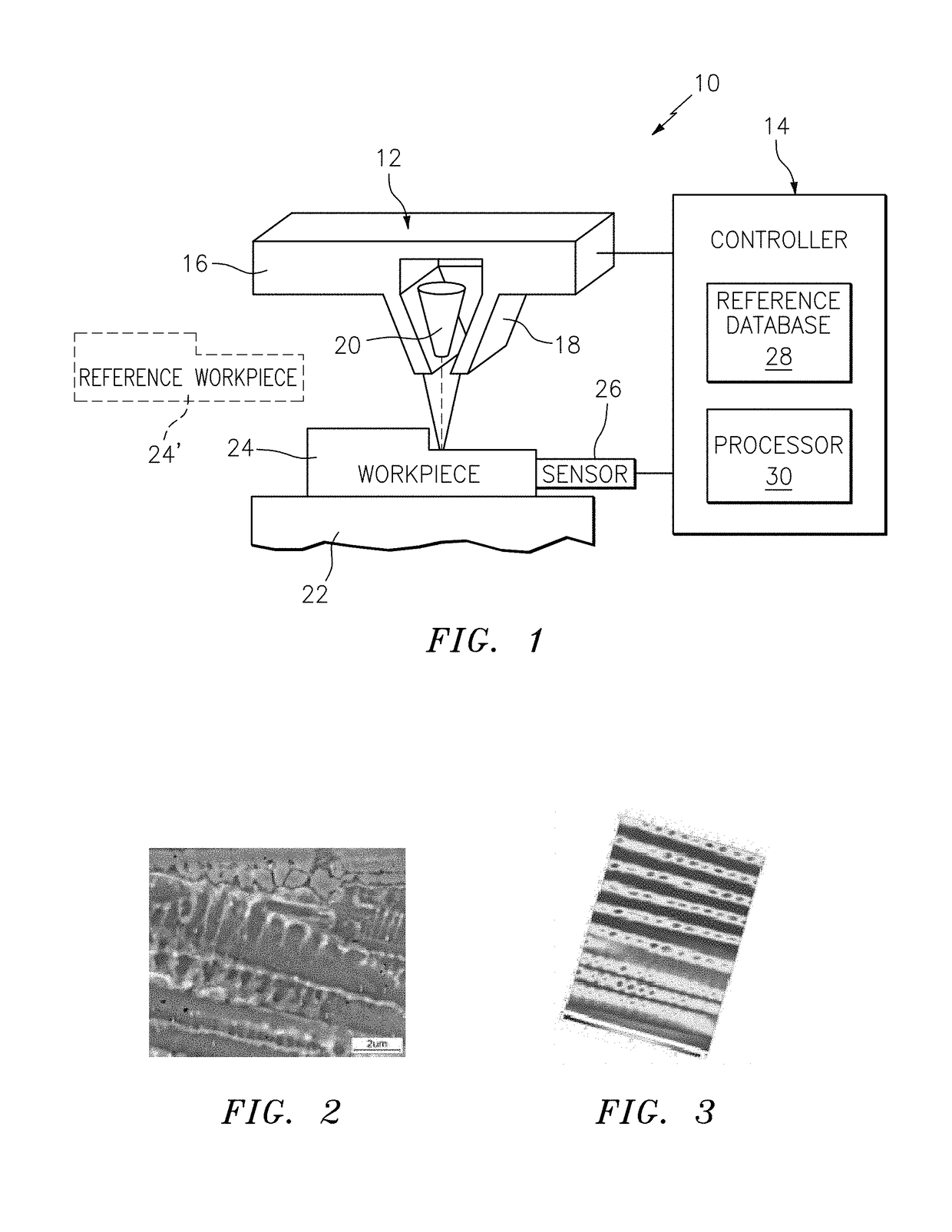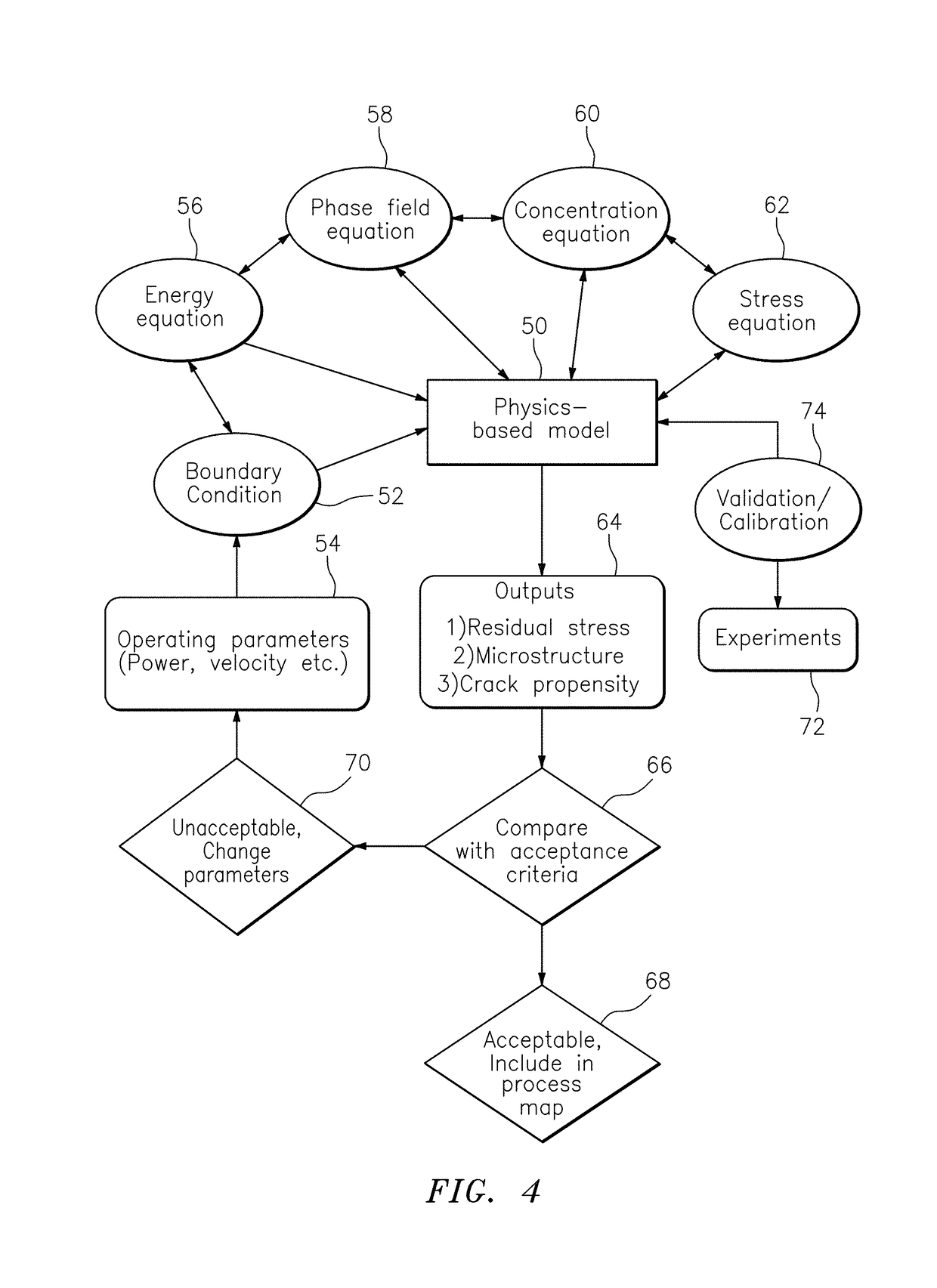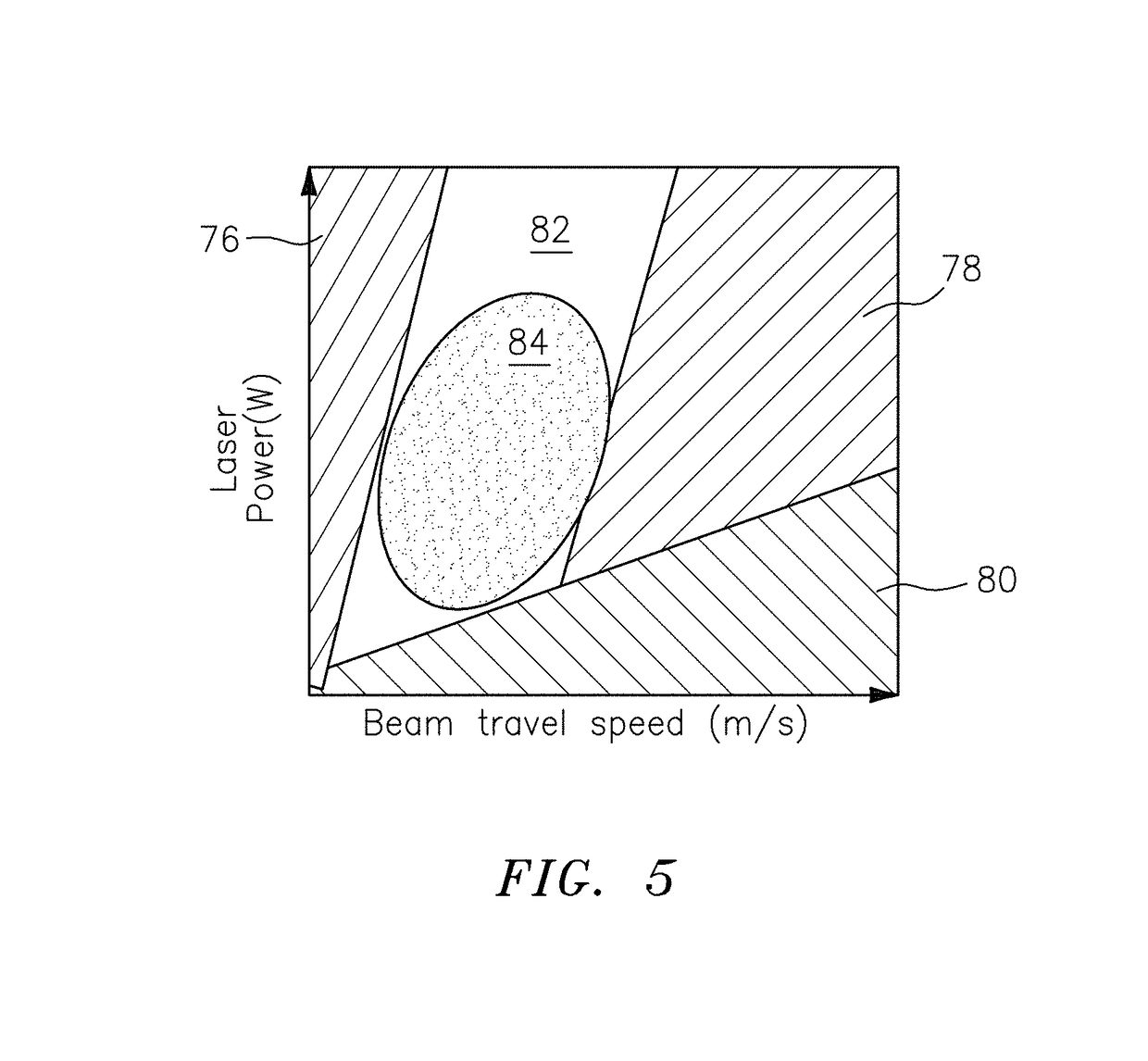Method for modeling additive manufacturing of a part
- Summary
- Abstract
- Description
- Claims
- Application Information
AI Technical Summary
Benefits of technology
Problems solved by technology
Method used
Image
Examples
Embodiment Construction
[0026]The present disclosure relates to the field of additive manufacturing and, more particularly, to a method for modeling an additive manufacturing process in order to develop a process map or series of process models at different process parameters which can be used to produce actual physical products or workpieces with reduced crack propensity, reduced residual stress and a desirable microstructure.
[0027]FIG. 1 illustrates a typical additive manufacturing system 10, which has an additive manufacturing tool 12 and a controller 14. Additive manufacturing tool 12 has a material reservoir 16, material dispensers 18, a laser guide 20, a platform 22 for a workpiece 24, and a sensor 26 which communicates with controller 14.
[0028]Controller 14 typically includes a reference database 28 and processor 30. Reference database 28 contains relevant data and processor 30 contains programming to control additive manufacturing tool 12 to produce parts as is known to a person of ordinary skill i...
PUM
| Property | Measurement | Unit |
|---|---|---|
| Speed | aaaaa | aaaaa |
| Microstructure | aaaaa | aaaaa |
| Velocity | aaaaa | aaaaa |
Abstract
Description
Claims
Application Information
 Login to View More
Login to View More - R&D
- Intellectual Property
- Life Sciences
- Materials
- Tech Scout
- Unparalleled Data Quality
- Higher Quality Content
- 60% Fewer Hallucinations
Browse by: Latest US Patents, China's latest patents, Technical Efficacy Thesaurus, Application Domain, Technology Topic, Popular Technical Reports.
© 2025 PatSnap. All rights reserved.Legal|Privacy policy|Modern Slavery Act Transparency Statement|Sitemap|About US| Contact US: help@patsnap.com



